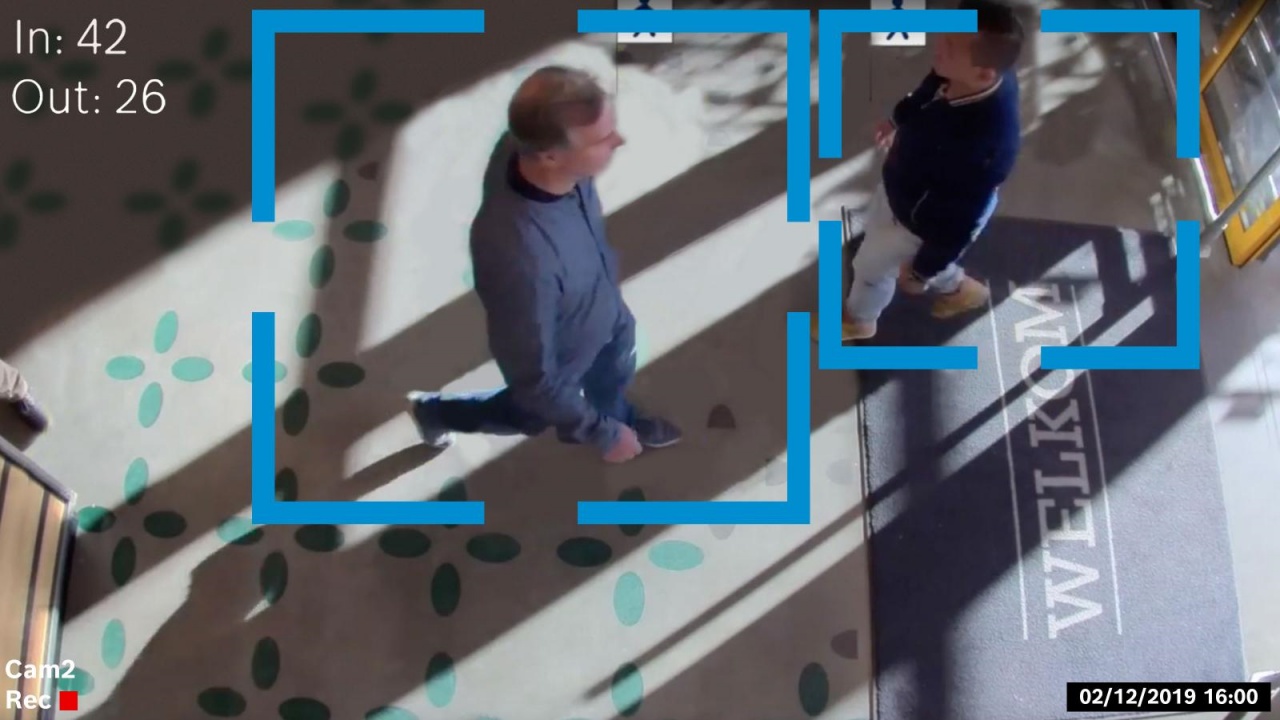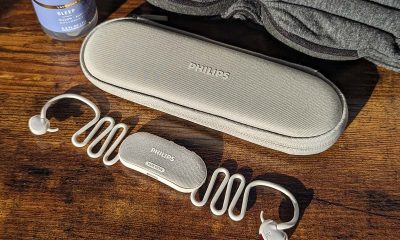Enterprise
PeopleCount by Bosch is made for social distancing
Another smart solution to the challenges of the pandemic

Tech has played a key role in the battle against the Coronavirus pandemic. While we wait with bated breath for a vaccine, tech companies have given us ways to detect the virus, properly contact trace, and limit its spread. Now, Bosch, in partnership with Globaltronics and Philips, launches PeopleCount for social distancing.
PeopleCount is a customizable security system. It lets facility managers track, control, and manage the number of people entering a particular area. This lets them operate efficiently while guiding people to follow and maintain social distancing measures.
What is it exactly?
It uses Bosch’s intelligent camera solution and Philips’ Android System on Chip (SoC) display that allows real-time monitoring and analysis of people flow with minimal human intervention.
The system can be used for single entrance or multiple entrances simultaneously and displays the data through a simple traffic light system. PeopleCount also keeps customers informed and engaged through both promotional and safety messaging displayed on its system.
Bosch and Philips believe this system can be an effective tool for enforcing social distancing protocols. They see it as a solution that requires minimum investment, is quick and easy to deploy, can be operated remotely, is customer-friendly, and has the ability to record data and statistics.
How does it work?
It functions with three main components: a standalone application as the main control, a camera to track and analyze movements, and a monitor that displays communication for customers.
Bosch’s intelligent camera counts the number of people entering and exiting the facility using its video analytics features. Meanwwhile, the Philips Android SoC display keeps the customers informed with visual alerts prior to entering a facility.
Users can install single or multiple cameras and monitors across different entries or individual stores. The cameras can process information and able to generate the status of occupancy real-time.
This, then will be displayed in any browser-enabled display such as tablet or an android TV. This gives users the advantage of controlling access to various points of a building.
When using multiple cameras, the system can also aggregate the counts from different cameras to monitor the occupancy of individual shops, floors, and even areas covered by multiple entries and exits.
Comes with an alert system
When the occupancy has reached its maximum number, the system can alert or trigger the facility’s building access control system to secure the entrance until the occupancy is reduced.
The system also delivers real time information to the display for customer queue communications, alerting visitors whether they must wait or if they can enter.
The screen display can be used in three formats:
- The entire screen can be used to signal individuals to wait or enter.
- It can also be divided 50/50, where one part is used for entry instructions and the other may include promotional or instructional videos and even special products on discount.
- The third option is the use of a traffic light display for entry management while having a large area of the monitor to display other content.
Bosch and Philips are actively marketing this to private companies. During the launch, they also said they have projects lined up with the Philippine government to rollout this tech.

For the longest time, Google kept Pixel and Android behind two different teams. While the Pixel team dealt with devices made by and for the brand, the Android team ships a product meant for brands outside of the company’s purview. However, the days of separation are at an end. Google is officially merging its Pixel and Android teams together.
In a shocking announcement, the company has confirmed that the teams handling hardware and software will fall under a single team headed by Rick Osterloh. Prior to the merge, Osterloh was the senior vice president of devices and service, which was Google’s hardware branch. He will now oversee both hardware and software.
Because of the new leadership change, Hiroshi Lockheimer, former head of Android, will now move on to other projects within Alphabet. Of note, the change is not harsh for Lockheimer. He and Osterloh had been contemplating on the merge for a while.
Now, why the change? As is the case with everything today, it’s all because of AI. Speaking to The Verge, Osterloh explains that the merge will help with “full-stack innovation.” With how technology is these days, it’s now impossible to develop AI without having a close eye on hardware, such as in Google’s AI developments for the Pixel camera. Merging the teams will help streamline development, especially when hardware is involved.
Despite the change, outside brands, like Qualcomm’s Cristiano Amon, remains confident of Android’s capabilities outside of Google. Just expect more AI coming out in the near future.

The ongoing trade war between the United States and China is putting a lot of companies out of business in one country. While all eyes are currently on America’s crusade against TikTok, China has launched a salvo of its own. The country has started banning AMD and Intel, starting with government devices.
Recently, as reported by the Financial Times, China has introduced a new rule that bans American chipsets and servers from government agencies. The new ban includes AMD, Intel, and Microsoft Windows.
In lieu of the now-banned brands, Chinese government agencies must use approved brands from a list of 18 Chinese manufacturers. Unsurprisingly, the list includes Huawei, another brand involved in the ongoing trade war. (Huawei is still banned on American soil.)
As with bans from America, China’s latest rules stem from a desire to implement national security. Both countries allege that using brands from the opposing side will open a potential avenue for transferring classified information.
Currently, the ban against the American chipsets are only affecting government devices. However, if it follows the same trajectory as Huawei and TikTok in the United States, a government-only ban might soon lead to an all-out ban on consumer devices. As TikTok is currently hanging in the balance, it’s unlikely that the trade wars will cool down anytime soon.

So far, Apple’s greatest enemy has been the European Union. Months and months of claiming that the company engages in anti-competitive practices, the region has successfully caused Apple to drastically change a lot of things about the iPhone including the Lightning cable. Now, a new challenger wants Apple to answer for its supposed grip on the industry: the United States government.
Today, the Department of Justice is officially suing Apple for supposedly monopolizing the smartphone industry and stifling competition. The lawsuit alleges that Apple’s lineup of products prevent users from trying out other brands. For example, Apple limits how well a third-party smartwatch works on an iPhone, pushing users to go for an Apple Watch instead.
The lawsuit also includes an important pain point in Apple’s fight in Europe. It says that the company makes it difficult for iPhone users to communicate with Android users (and vice versa). Late last year, the company already committed to supporting RCS as a messaging standard, finally easing communication between the two systems. Their adoption has yet to arrive, though.
Though not as stringent as Europe, the American government is no slouch when it comes to questioning its own companies for pursuing anti-competitive practices. In the past, it went through Google and Spotify to protect the interests of its citizens. The lawsuit against Apple is no different, gathering signatures from sixteen states.
For Apple’s part, the company aims to get the case dismissed, alleging the lawsuit’s unfair scope of just the American people when it targets the entire world.
SEE ALSO: Apple opens first Developer Center in Southeast Asia
-

 Features1 week ago
Features1 week agoFortify your home office or business setup with these devices
-

 Events2 weeks ago
Events2 weeks agoStellar Blade: PlayStation taps cosplayers to play Eve for game’s launch
-

 Gaming2 weeks ago
Gaming2 weeks agoThe Rogue Prince of Persia looks like an ultra-colorful roguelite
-

 Accessories2 weeks ago
Accessories2 weeks agoLogitech unveils G Pro X 60 gaming keyboard: Price, details
-

 Gaming2 weeks ago
Gaming2 weeks agoStar Wars Outlaws release date revealed
-

 Reviews7 days ago
Reviews7 days agorealme 12+ 5G review: One month later
-

 Gaming2 weeks ago
Gaming2 weeks agoLenovo confirms development of a Legion Go 2
-

 Deals2 weeks ago
Deals2 weeks agoTCL P635 TV: Big savings for TCL’s anniversary


























